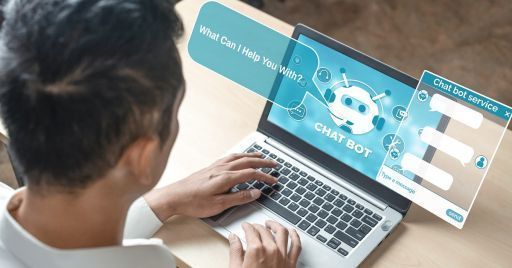

Chatbots: what are they and how to use them in eLearning?
How does a chatbot work in an online course and is its use in opposition to course customisation?
Chatbots: what are they and how to use them in eLearning?
How does a chatbot work in an online course and is its use in opposition to course customisation?
Using chatbots within a learning management system (LMS) platform is a trend in eLearning that knows no bounds. What is the role of this intelligent software and how does it meet the need for personalisation of eLearning courses?
Chatbot: much more than a chat
The word chatbot is a neologism that comes from the combination of chat and robot. To put it simply, we can think of a chatbot as a robot that we ask questions to via a chat room. In fact, chatbots for companies are mainly used to offer customer support, to answer the most frequent questions of their online customers. If we analyse the technology behind chatbots, we realise that there is much more to it than that. We enter the realm of machine learning and artificial intelligence.
How does a chatbot work?
A chatbot is a piece of software that interprets natural language, that of human beings, and responds instantaneously, pertinently and automatically.
Using algorithms based on natural language understanding (NLU), it is able to instantly interpret the meaning of previously classified written and oral messages, while conversing with its interlocutor. The difference with a live chat is that there is no human present, although some chatbots involve interaction with human assistants to whom they transfer instances.
The most innovative aspect of the chatbot is its continuous learning capacity: the more messages it encodes, the more it interacts with users, the more it improves its responses and communication. And it is this ability to learn, thanks to the training it receives from humans, that makes the chatbot an increasingly central tool in eLearning.
How do I use a chatbot in an online course?
Using a chatbot in online training means equipping yourself with a tool that can interact with users, provide additional elements to the online course and analyse data on each user. The role of the chatbot, therefore, goes beyond simply answering students' questions.
Chatbots to suggest a training path and navigate learning resources
In a corporate LMS platform there are usually several courses; some are part of mandatory training, while others are optional, as part of the professional development of employees. When accessing the platform for the first time, the employee may be greeted by a chatbot that asks precise questions about the employee's role, interests, knowledge. The aim is to be able to recommend the most suitable training courses for the employee's position, tastes and training needs. In subsequent accesses, the chatbot can function as an internal search engine that helps the trainee find the courses, modules or information he or she needs, selecting the most appropriate training resources.
Chatbot for analysing training needs and behaviour
The questions asked by the chatbot can be even more specific and help determine what the employee's knowledge level is, whether they are a new employee or need to retrain and learn new skills. With a clearer idea of the training needs, precise modules can be suggested, videos and other content can be shown based on the learners' preferences.
Chatbots as a training and assessment tool
With access to the company's training content, a chatbot could answer questions from an employee who needs an immediate answer that can be applied in the workplace. Within the answer can be found short training content that solves a specific question: in a word, microlearning. Once a training course has been completed, trainees can use chatbots to review the content learned through targeted questions, which are also useful for evaluation purposes.
The analysis, training, evaluation, and search for appropriate content are addressed to one and only one student, whose preferences, skills, knowledge, and performance the chatbot has learned about. In this sense, the chatbot goes exactly in the direction of personalising online courses.
Translated with www.DeepL.com/Translator